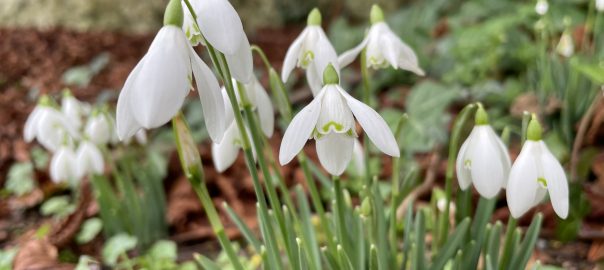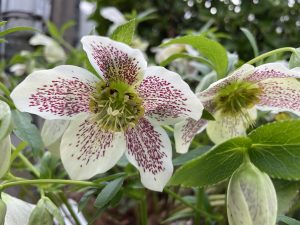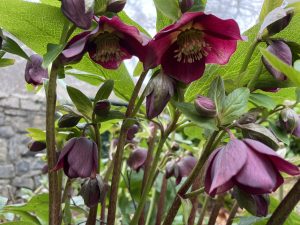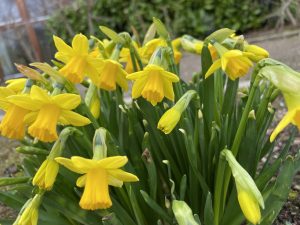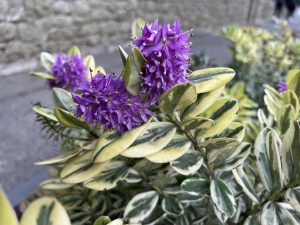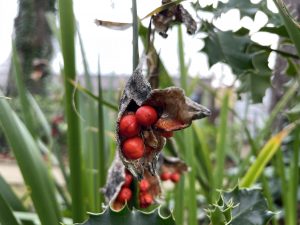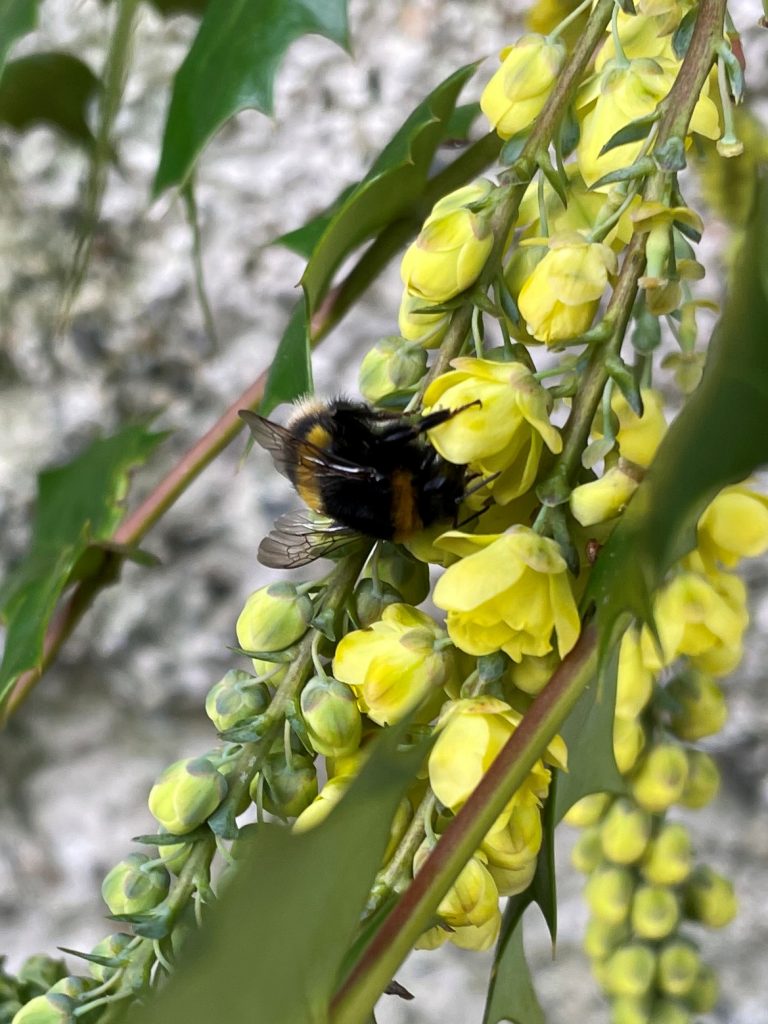Ireland day 0127. Wednesday 02 February 2022- Brigid
| Today’s summary | Had a couple of video calls with friends so scheduled the day around them. Very mild and spring-like, in keeping with St Brigid’s day. Lots of flowers on display on our short walk along the lagoon | ||||
| Today’s weather | Mild and dry, heavily overcast but still no rain. Light breeze; about 12C | ||||
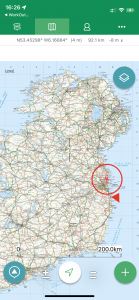 |
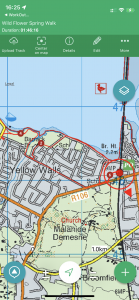 |
||||
| Today’s overview location (the red cross in a circle shows where Val and I are at the moment) |
Close-up location (Click button below to download GPX of today’s walk as recorded, or see interactive map at bottom with elevations corrected): St Brigid |
||||
Commentary
There is some dispute about who St Brigid was, and indeed about when exactly St Brigid’s day is. But it’s usually sometime about the first or second or February and is roughly halfway between the winter solstice and the vernal equinox. It’s quite widely celebrated in Ireland and indeed here in the Republic, it will become a bank holiday from 2023 onwards. It is one of four annual Gaelic “quarter days”, each being halfway between the solstice and the the equinox. One of the others is Samhain, which is around 31 October or 1 November, at the time of Halloween, and you can read about it in the blog from that date last year. St Brigid’s day is known as Imbolc in Irish, and it’s widely held to mark the beginning of spring.
(By the way I know it’s also 100 years ago today since James Joyce’s epic “Ulysses” was published. There are lots of events on in Dublin to commemorate this anniversary, so I expect I’ll be having something more to report about Joyce in coming weeks).
And Brigid certainly seemed to be working her magic in Malahide today. It was a fabulously mild day – about 12C – and for now at least, there is a definite sense of spring in the air. I had a couple of video calls to make with friends first thing in the morning and last thing in the afternoon, so that framed our activities for the day. While I was on my morning call, Val was busy resuming her online Irish language classes with the Conradh na Gaeilge (Gaelic league), so the timings worked out well. (By the way the more you study Irish, the harder it gets, in my opinion).
So, in the gap between calls, we had an early lunch, then slipped out into the day to see how the spring was coming along in this particular corner of Ireland. It’s funny, but as soon as we stepped out of the front door, the air almost smelled different. Much softer, without that hard damp edge that midwinter brings in these maritime climes. And the plants lining our path down to and then west along the estuary were certainly showing lots of signs of spring. For the first time, I noticed some small drifts of snowdrops, which are by no means uncommon in Ireland, but I haven’t seen as many as you do in the UK. But daffodils were also beginning to pop up, along with hebes, Christmas roses, and many more. Some photos are attached to the blog to give you a sense of how spring feels over here.
It was a real delight to be out today, and of course we all know that we could be living in a fools paradise. Who knows when the next beast from the east will emerge – but at least it’s lovely while it lasts. And that, I think, has become the maxim for our lives in Ireland – enjoy every day for what it is, and make the most of it. I’ve never in my life been quite so aware of every day of the changing seasons, and it’s a wonderful and enriching experience.
So on that poetic note, I’ll end this short blog, and let you go away and admire the flowery pictures which I so much enjoyed taking.
Today’s photos (click to enlarge)
Interactive map
(Elevations corrected at GPS Visualizer: Assign DEM elevation data to coordinates )
Max elevation: 16 m
Min elevation: -1 m
Total climbing: 90 m
Total descent: -89 m
Total time: 01:46:16
